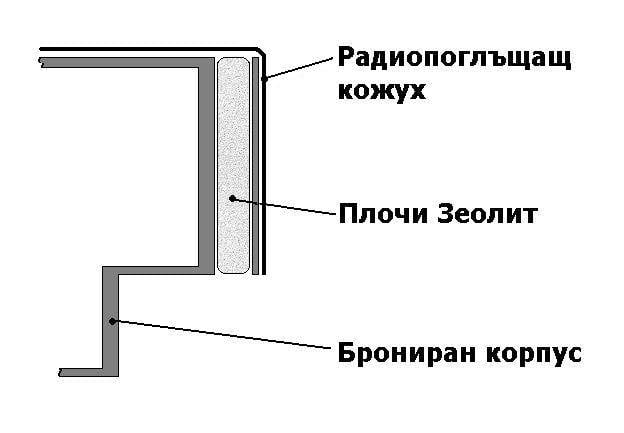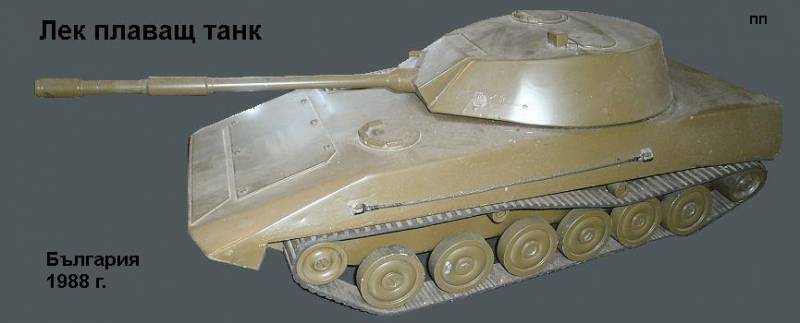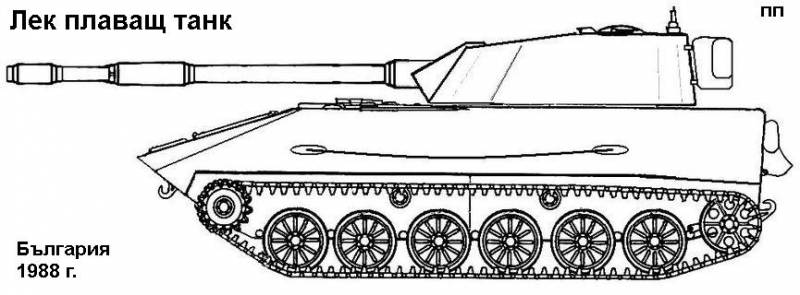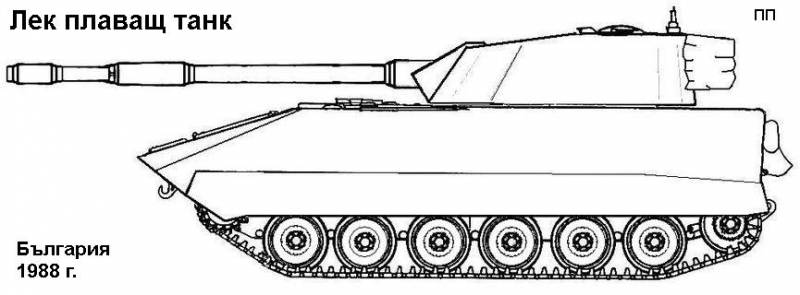Bulgarian "Sprut". Light amphibious tank that democracy killed
By the middle of 1980's. The Bulgarian military by strategic analysis came to the conclusion: in view of the prevailing mountainous terrain in the Balkan theater, we need a light "mountain" tank, which has great firepower, mobility and reduced radar visibility.
Under socialism, Bulgaria had a well-developed military industry and a fairly high design potential. The main brain center of the army was the Military Scientific-Technical Institute in Sofia (VNTI), and he was entrusted with this project.
During the formation of the TTH of the tank, the designers considered the Yugoslavian T-84 (T-72) as a potential "opponent". The Bulgarian light tank must have a weapon capable of striking T-84 at medium distances, which is typical of mountainous terrain. In this case, the Bulgarian tank should have greater mobility and less visibility. For comparison: in tests it was planned to use T-72 already in service with Bulgaria. It was expected that Turkey and Greece would soon acquire new “Leopards-2”, which required an adequate response in accordance with the specifics of the relief in the Balkan Peninsula.
As a basis, the Bulgarian designers took the Gvozdika self-propelled guns, which, together with the MTLB armored personnel carrier, were manufactured under a Soviet license at the military plant 9 May in Cherven Bryag. Earlier on this base, the Bulgarians developed their first BMP-23 and produced 150 units. It was developed and produced a small series of BMP-30 with a tower and weapons from the BMP-2.
Work on the project started in 1987-88. The body of the BMP-23 was shortened by removing one row of rollers, reinforcing the booking. So improved maneuverability. For better buoyancy, we slightly increased the height of the sides. The clearance has been increased. Added 2 track rollers. In Bulgaria, according to their projects, tracks with a rubber cushion for the T-72 have already been manufactured at the Zebra plant in Kurilo. Such was developed for the new LPT. Swimming should be carried out by rewinding the tracks.
An innovation was the use of multi-layered armor from a zeolite plate - a special mineral that was mined in the Rhodopes. It is very effective against cumulative ammunition. The Bulgarian designers have developed such armor and put it on the T-55 domes. The outer layer of armor of a new light tank should have radio-absorbing characteristics due to a special material and the absence of a gap between the sheets. It was planned to use a special technology for mounting.

For the power plant, it was planned to use a horsepower 600 — 700 diesel engine. Initially, the designers thought to take the engine from the T-55 or T-72, but then they abandoned this idea. The opportunity to buy compact turbo engines of corresponding capacity in Sweden was opened, we decided to use it. In the future, the Swedish engine was planned to be mastered in the production of the Vasil Kolarov plant in Varna. The plant itself was built by the British firm Perkins and produced diesel engines in large batches for Bulgarian trucks.
The weight of the tank should not exceed 18 tons. The crew was supposed to consist of 3-s people. The armament of the tank should be from the 7,62-mm coiled PKT machine gun and 12,7-mm NSVT machine gun or 14,5-mm CPVT. A PKT machine gun was already produced at the Arsenal plant in Kazanlak.
The basic one weapons the tank was supposed to be the Soviet 100-mm gun MT-12 "Rapier". Its production according to Japanese and German technology was planned to be established at the Cherven Khalm heavy mechanical engineering plant in Radomir, which had the most modern equipment. It was believed that the plant will be able to improve the guns and combine it with an automatic loader. The ammunition was supposed to include 40 shells, the production of which was to be mastered at the Vyksa Steel Works in Sopot. For guaranteed destruction of well-armored vehicles at long distances, a special composition of ammunition with cores of high-strength material was developed.
In Bulgaria, armor was produced by several companies: a metallurgical plant in the town of Pernik, the Khan Krum military repair plant in Targovishche, the Beta plant, and Cherven Bryag, where the BMP-23 had already left the assembly line. The production of the tank itself was to be carried out at ZTM Cherven Bryag, Radomir.
By the end of 1988, the preliminary draft was ready and considered at the highest state level. Were invited and Soviet experts, who, after reading, gave the project a very high rating.
Since the tank was to be commissioned not only by the Bulgarian army, but also to be exported, the Soviet experts still showed a certain jealousy. Instead of continuing to develop, the Bulgarians were offered to supply Soviet PT-76 at a very low price and to assist in their modernization. The then Deputy Minister of Defense of Bulgaria, Boris Todorov, categorically opposed this proposal, citing the following argument: PT-76 does not meet modern conditions. Todorov criticized weak armor and the D-56 cannon that were not powerful enough to fight modern tanks. The PT-76 “floating tank” concept itself was optimized for better buoyancy, which was not suitable for the role that the Bulgarian light tank was to play. Ultimately, Soviet experts objectively evaluated the project. They agreed that the tank is quite modern and meets all requirements. The work began to boil again, the layout of the hull and parts began It was necessary to develop test samples. According to the plan, they should have been tested at the Bulgarian and Soviet test sites.
Meanwhile, 10 November 1989 broke out, the day when major changes in social and political life began in Bulgaria. Initially, this did not affect the course of the design, although funding was sharply reduced. Contacts were established with Israeli firms for the supply of the most advanced surveillance devices for the tank.
But ultimately, supporters of "democratic values" did their job. All achievements of VNTI were abandoned, funding stopped, the institute was closed. All specialists were fired. Documentation on the development of the institute was destroyed or left where it was not clear. The only model of this promising machine has been preserved. Military enterprises, factories, plants went bankrupt and closed. The Bulgarian military industry in 1990-x was destroyed in the same way as in Russia.
Technical characteristics of the project tank:
• weight - 18 tons;
• crew - 3 person;
• engine - HP 600-700;
• speed on land - 70 km / h, on water - 6 km / h;
• armament: a smooth-bore cannon of caliber 100 mm (with automatic loader), a machine gun of caliber 12,7 mm or 14,9 mm, smoke grenades;
• ammunition - 40 shells;
• Armor developed by technology "stealth".
Actually, this is all that is known about an interesting car, which, no doubt, could appear not only in the Bulgarian army, but also in the army of the USSR and other ATS countries.
Note. The author of the material could not establish the original name of the tank. The abbreviation LPT used in the text is conditional.



Information